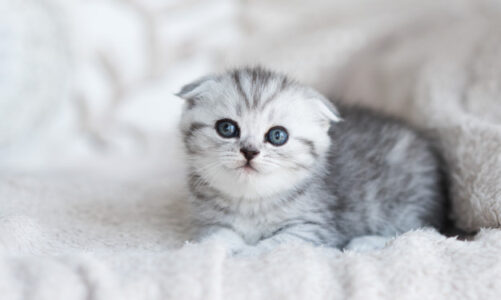“Cats always know whether people like or dislike them. They do not always care enough to do anything about it.”–Winifred Carriere
Do you know how to choose the best food for your cat? If you don’t, you should learn.
The modern housecat is like a tiny bit of wildness we allow in our homes. Elegantly slinking from room to room on tiny replicas of panther feet, our cats let us keep a little slice of the primitive jungle in our technologically packed lives.
Of course, they are also furry little jesters, charming us enough to fuel a billion hilarious Internet memes.
Graceful or goofy, our pet cats are as important to us as any other member of the family. As such, you’ll want to know how to choose the best food for your little furry pal.
Unfortunately, there is a bewildering amount of different types of cat food on the market, in wet and dry types, not to mention trendy raw-food pet diets for cat owners to try.
What is a conscientious new cat owner to do? Don’t fret. Just follow these simple guidelines and you’ll definitely know how to choose the best food for your cat.
1. Check the ingredients
When considering a store-bought cat food, always check the ingredients list first. Always avoid any commercial cat food that lists grain of any type in the first few ingredients.
Cats are obligate carnivores, meaning they must eat meat. While feral cats will occasionally munch on grasses to help with their digestion, no cat will thrive eating a food that consists mainly of vegetable material.
The meat and bones of a cat’s natural prey contain a vital nutrient called taurine you’re your cat needs to live. Foods that list corn, rice, or any other grain in the first few ingredients are not going to provide an adequate amount of taurine for your cat to remain healthy.
Avoid these foods, as although they are often less expensive that higher-grade products, you will pay the price in the long run, not just with your cat’s health, but financially as well as this food will not be as filling to your cat causing them to actually eat more of it.
2. Provide plenty of fluids
Cats do not have a strong natural urge to drink a lot of water. In the wild, cats absorb most of the water they need from the bodies of the small animals they eat.
It’s a good idea, then, to mimic this for your housecats by serving them canned, wet food or raw, moist meat at least once a day. (If feeding your cat raw meat, don’t use chicken in order to avoid the possibility of bacterial contamination.
If you do choose not to feed your cat dry food only, make sure there is fresh, clean water available to them at all times.
Because water placed in a bowl has a tendency to either evaporate, get nearby food in it, or otherwise become unpalatable, you might want to invest in one of the small water fountain systems available.
If this isn’t possible for you, keep an eye on your cat’s water dish to make sure the cat didn’t knock it over or dirty it somehow.
Don’t count on your cat to “tell you” he’s thirsty the same way they might “tell you” he’s hungry, as they won’t feel the same level of urgency at thirst as they do at hunger.
3. Avoid gimmicks and clichés
Your cat doesn’t care too much about the shape of his food. Any food that markets itself based on cute shapes that really look like tiny fish or actual little bits of steak or anything else suspiciously gimmicky like should cause you to be suspicious.
Likely, the makers of these food products are gunning more for your dollars than your cat’s satisfaction. Your cat will be just as happy with food shaped like little rectangles as he will be with food shaped like little fish.
Conversely, there are things your cat will likely find delicious that you should avoid giving him.
Things like cow’s milk, for instance, will seem like a treat for your cat but will likely cause some severe intestinal problems.
If you have your heart set on giving your cat a saucer of milk, give him soy or rice milk instead of dairy products.
4. Be consistent
For people, variety in your diet is the spice of life. For your cat, it is the surest way to tummy troubles.
Try not to switch foods on your cat too often. Your cat needs a consistent diet to promote healthy digestion. So, once you decide on the best food for your cat stick with it.
If you do something like pick up a cheap can of food at the corner store if you’ve accidentally run out of your regular brand you’re likely to wind up with an unhappy cat and an exceedingly unpleasant cat box.
Whether you choose wet or dry food, raw meat or commercially prepared food, if you keep these four guidelines in mind you should be able to devise a diet for your cat that both works for you and keeps your cat healthy.
You want your small furry friend to remain a healthy and active companion for as long as possible. Cats keep us in touch with what’s important in life, with their primitive hunter by way of fluffy goofball personalities.
They deserve the best, and now you know how to choose the best food for your cat.




